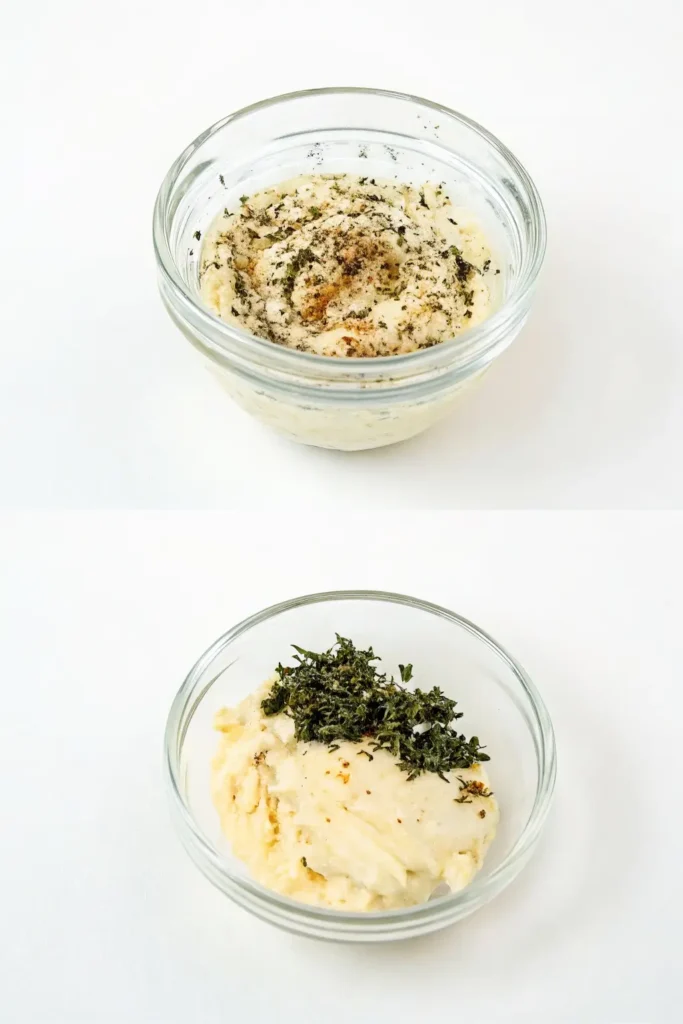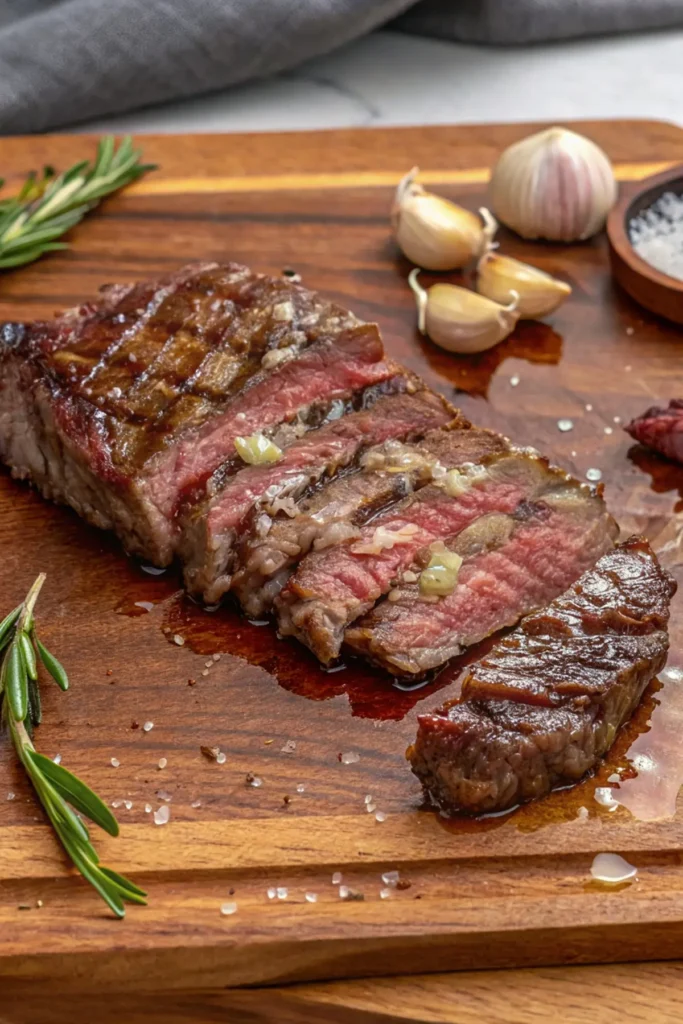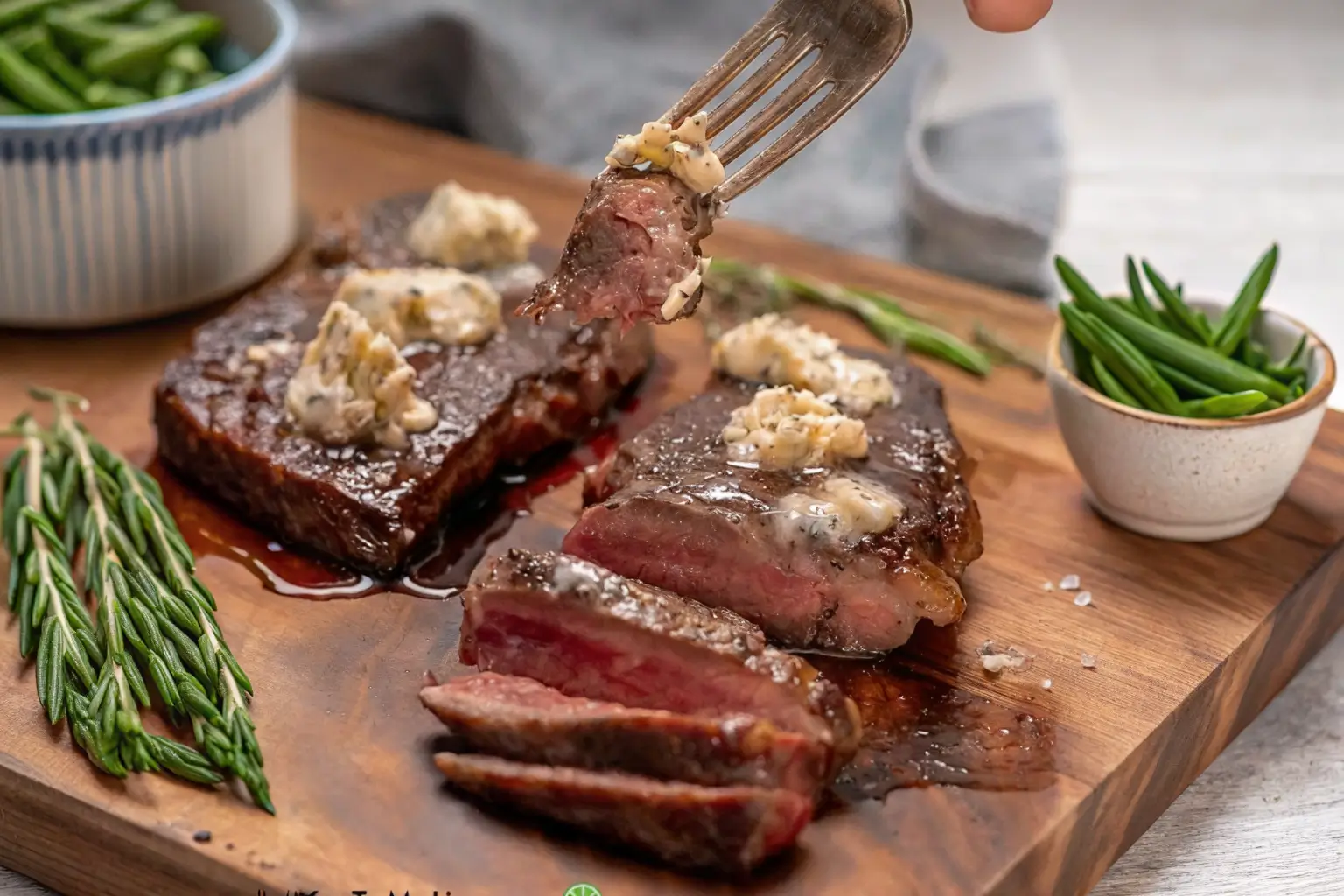Beef chuck eye steak is one of the best hidden treasures at the meat counter. While many people rush to buy expensive cuts, beef chuck eye steak offers great marbling and tenderness for much less money. Home cooks have found that this affordable cut turns into something special with the right cooking methods. With a few simple tricks, this budget-friendly option can become the star of your dinner table.
Table of Contents
What Is Beef Chuck Eye Steak?
What Makes Chuck Eye Steak Unique?
What makes beef chuck eye steak special is where it comes from on the cow. It sits right where the shoulder meets the rib area. Beef chuck eye steak contains the same muscle as ribeye but extends into the chuck section. This location gives beef chuck eye steak rich flavor from the chuck part with some of the tenderness you’d expect from ribeye, making it a great deal for people who love steak but want to save money
Chuck Eye Steak vs. Ribeye Steak: A Detailed Comparison
| Characteristic | Chuck Eye Steak | Ribeye Steak |
|---|---|---|
| Cost | $7-10 per pound | $15-25+ per pound |
| Flavor Profile | Rich, beefy, slightly more intense | Rich, buttery, milder |
| Fat Content | Good marbling with some connective tissue | Excellent marbling throughout |
| Tenderness | Moderately tender with proper cooking | Very tender naturally |
| Best Cooking Methods | Pan-searing, grilling, reverse sear | Pan-searing, grilling, broiling |
| Value Rating | ★★★★★ | ★★★☆☆ |
While ribeye might win slightly on tenderness, the chuck eye’s deeper beef flavor and dramatically better value make it the smarter choice for weekly meals and special occasions alike.
While ribeye gets most of the attention, Beef Chuck Eye Steak offers similar marbling patterns to black pepper angus steak but typically costs 40-60% less.
Best Cuts and Grades for Chuck Eye Steak
For the ultimate chuck eye steak experience, look for:
- USDA Choice or Prime grades: The higher grades ensure better marbling throughout the meat
- Uniform thickness: Aim for steaks at least 1-1.5 inches thick for even cooking
- Vibrant color: Fresh chuck eye should display a bright, cherry-red color
- Even marbling: Look for fine white flecks of intramuscular fat distributed throughout the meat
- Limited connective tissue: Some is inevitable due to its location, but excessive gristle should be avoided
Pro tip: Develop a relationship with your local butcher and specifically request chuck eye steaks cut from positions closer to the ribeye (sometimes called “chuck eye roll”) for the most tender results.
Secret #1: Choosing and Preparing the Perfect Cut

How to Select a Tender Chuck Eye Steak
Finding the perfect chuck eye steak requires a discerning eye:
- Know what you’re looking for: Ask your butcher specifically for “chuck eye steak” (not to be confused with chuck roast or regular chuck steak)
- Inspect the marbling: Look for fine, web-like intramuscular fat patterns throughout the meat
- Check thickness: Select cuts between 1-1.5 inches thick for optimal cooking control
- Examine the color: Choose steaks with vibrant red coloring and avoid those with brown edges
- Consider the source: When possible, opt for grass-fed or sustainably raised beef for superior flavor
Remember that a quality chuck eye steak should resemble a slightly less marbled ribeye, not a typical chuck steak.
Pre-Cooking Preparation: Critical Steps for Success
Proper preparation is essential for transforming chuck eye steak from good to exceptional:
- Temperature acclimation: Remove the steak from refrigeration 30-45 minutes before cooking to allow it to reach room temperature
- Moisture management: Pat the steak thoroughly dry with paper towels to ensure proper searing
- Trim selectively: Remove excessive external fat if desired, but leave some for flavor
- Season strategically: Apply salt at least 40 minutes before cooking (or just before) to avoid drawing out moisture during the critical in-between period
These preparation steps create the foundation for perfect texture and flavor development during cooking.
Marinades and Seasoning Options That Elevate Chuck Eye Steak
While chuck eye steak is naturally flavorful, the right seasoning approach can enhance its inherent qualities:

Classic Steakhouse Seasoning
- 2 tablespoons kosher salt
- 1 tablespoon freshly ground black pepper
- 1 teaspoon garlic powder
- 1 teaspoon onion powder
- ½ teaspoon dried rosemary, crushed
Flavor-Boosting Marinade (2-4 hours)
- ¼ cup olive oil
- 3 tablespoons Worcestershire sauce
- 2 tablespoons soy sauce
- 4 cloves garlic, minced
- 1 tablespoon fresh rosemary, chopped
- 1 tablespoon Dijon mustard
- 1 teaspoon freshly ground black pepper
Tenderizing Marinade (For tougher cuts, 4-6 hours)
- ½ cup pineapple juice
- ¼ cup olive oil
- 3 tablespoons balsamic vinegar
- 2 tablespoons brown sugar
- 4 cloves garlic, minced
- 1 tablespoon kosher salt
- 2 teaspoons red pepper flakes
Remember: With quality chuck eye steaks, less is often more. Sometimes a generous application of kosher salt and freshly ground black pepper is all you need to let the beef’s natural flavors shine.
Secret #2: Mastering Cooking Techniques
Pan-Searing Perfection: Step-by-Step Guide
Unlike tougher cuts that need hours of cooking, beef chuck eye steak cooks quickly while staying juicy. A 1½-inch thick beef chuck eye steak needs about 4-5 minutes on each side for medium-rare when cooking in a pan. This short cooking time is another reason beef chuck eye steak is perfect for busy weeknight meals when you don’t have much time but still want a tasty dinner.
- Preheat properly: Heat a cast-iron skillet over high heat until it just starts to smoke
- Add the right oil: Add 1-2 tablespoons of high smoke-point oil like avocado, grapeseed, or clarified butter
- Sear with purpose: Place the steak in the pan and press gently to ensure full contact; don’t move it for at least 2-3 minutes
- Monitor the crust: Cook until a deep, golden-brown crust forms (about 3-4 minutes for 1.5-inch steaks)
- Flip once: Turn the steak over just once and reduce heat to medium-high
- Enhance with aromatics: Add 2 tablespoons butter, 2 garlic cloves, and fresh thyme or rosemary to the pan
- Baste continuously: Tilt the pan and spoon the melted butter mixture over the steak repeatedly
- Check temperature: Cook to desired doneness, using a meat thermometer for precision
- Rest properly: Transfer to a cutting board and rest for 5-7 minutes before slicing
This method creates the perfect combination of a flavorful crust and juicy interior that defines a perfect steak.
Grilling Chuck Eye Steak Like a Professional Chef
The grill adds another dimension of flavor to chuck eye steak:
- Preheat strategically: Set up a two-zone fire with high direct heat and moderate indirect heat areas
- Oil prevention: Oil the steak lightly (not the grates) to prevent sticking and flare-ups
- Sear efficiently: Place over direct heat for 2-3 minutes per side to develop grill marks and crust
- Manage the cook: Move to indirect heat to finish cooking to desired doneness
- Close the lid: Keep the grill lid closed when cooking on indirect heat to maintain temperature
- Rest correctly: Rest the steak on a warm plate tented with foil for 5 minutes
For gas grills: Preheat one side to high (450-500°F) and the other to medium (325-350°F). For charcoal: Arrange coals on one side for a natural two-zone setup.
For additional beef grilling techniques, you might enjoy our guide to baseball steak grilling which uses similar principles for perfect doneness

The Reverse Sear Method: A Game-Changer for Thick-Cut Chuck Eye
For thicker chuck eye steaks (1.5+ inches), the reverse sear method yields extraordinary results:
- Low and slow start: Preheat oven to 275°F and place steak on a wire rack over a baking sheet
- Cook gently: Bake until internal temperature reaches 10-15°F below your target doneness (about 20-25 minutes for medium-rare)
- Rest briefly: Remove and rest for 10 minutes while heating a cast-iron skillet until smoking hot
- Sear rapidly: Sear the steak for 45-60 seconds per side in the hot skillet with high smoke-point oil
- Finish with butter: Add butter and aromatics for a final flavor boost in the last 30 seconds
- Serve immediately: The beauty of reverse sear is minimal additional resting time is needed
This method provides unparalleled edge-to-edge doneness with a perfect crust, transforming chuck eye into a steak that rivals those from high-end steakhouses.
The reverse sear method works beautifully for both chuck eye steak and beef bottom round steak when you want perfect edge-to-edge doneness
Secret #3: Achieving Perfect Doneness
Getting the right temperature is key when cooking beef chuck eye steak. For the most tender results, cook beef chuck eye steak to medium-rare (130-135°F) or medium (140-145°F). If you cook it more than that, the beef chuck eye steak can get tough as the fat melts away without enough time to soften the small amount of tough tissue in this cut
| Doneness | Temperature | Description | Best For |
|---|---|---|---|
| Rare | 120-125°F | Cool red center, very soft | Highest quality, extremely fresh chuck eye |
| Medium-Rare | 130-135°F | Warm red center, tender | Most chuck eye steaks (recommended) |
| Medium | 140-145°F | Pink center, slightly firm | Steaks with more connective tissue |
| Medium-Well | 150-155°F | Slight pink, firmer texture | Not ideal for chuck eye |
| Well-Done | 160°F+ | No pink, much firmer | Not recommended for chuck eye |
Since chuck eye contains slightly more connective tissue than ribeye, cooking to medium-rare or medium allows enough heat to melt the fat and collagen while maintaining tenderness.
Tools for Perfect Doneness
- Instant-read digital thermometer: The most reliable method for precision cooking
- The touch test: Compare the feel of the steak to different parts of your hand (thumb and palm connection = rare, base of thumb = medium-rare, etc.)
- Timing method: For 1-inch steaks: 4 minutes per side for medium-rare, 5 minutes for medium (adjust for thickness)
Remember that carryover cooking will raise the temperature by 5-10°F during resting, so remove the steak slightly before it reaches your target temperature.
Secret #4: Avoiding Common Steak Cooking Mistakes
Overcooking: The #1 Enemy of Chuck Eye Steak
Chuck eye’s sweet spot is medium-rare to medium. Beyond that, you risk losing the tenderness that makes this cut special.
Prevention strategy:
- Use a reliable meat thermometer
- Remove the steak 5-10°F before target temperature
- Remember that thinner steaks cook faster
- When in doubt, undercook slightly – you can always cook more, but never less
The Critical Resting Phase: Why It Matters
Resting allows the meat’s proteins to relax and reabsorb juices, resulting in a significantly more tender and flavorful steak.
Perfect resting technique:
- Rest for approximately 5 minutes per inch of thickness
- Place on a warm plate or cutting board
- Tent loosely with foil (don’t wrap tightly)
- Resist the urge to cut into the steak prematurely
- Remember that the steak will continue cooking slightly during this time
Seasoning Mistakes That Ruin Good Chuck Eye Steak
Many home cooks either under-season or season at the wrong time.
Seasoning best practices:
- Season generously – more than you think you need
- Use kosher salt rather than table salt for better adhesion and flavor
- Season either 40+ minutes before cooking OR right before cooking (avoid the in-between period that draws out moisture)
- Season from a height of 8-12 inches for even distribution
- Don’t forget to season the sides of the steak, not just the top and bottom
Temperature Management: A Professional Approach
Starting with properly tempered meat ensures even cooking.
Temperature guidelines:
- Remove steak from refrigerator 30-45 minutes before cooking
- Never cook straight from the freezer (even if the package says you can)
- Ensure your cooking surface is properly preheated before the steak touches it
- Let cooking equipment recover heat between batches if cooking multiple steaks
Secret #5: Creative Recipes and Pairing Ideas
Chuck Eye Steak with Compound Butter Variations
Compound butter is the secret weapon of steakhouses, adding richness and flavor complexity.
Classic Garlic-Herb Butter
- 8 tablespoons unsalted butter, softened
- 3 cloves garlic, minced
- 1 tablespoon fresh parsley, finely chopped
- 1 teaspoon fresh thyme leaves
- 1 teaspoon fresh rosemary, finely chopped
- ½ teaspoon lemon zest
- ¼ teaspoon sea salt
Blue Cheese Butter
- 8 tablespoons unsalted butter, softened
- 3 tablespoons quality blue cheese, crumbled
- 1 tablespoon chives, finely chopped
- ½ teaspoon freshly ground black pepper
- Pinch of kosher salt
Instructions: Mix ingredients, form into a log using plastic wrap, refrigerate until firm, then slice into medallions to top hot steak.
Slow-Cooked Chuck Eye Steak Recipes
Transform tougher chuck eye steaks into fork-tender delights:
Red Wine Braised Chuck Eye
- Season 2-3 chuck eye steaks generously with salt and pepper
- Sear on high heat until well-browned on both sides
- Remove steaks and sauté 1 diced onion, 2 carrots, and 2 celery stalks
- Add 4 cloves minced garlic and 2 tablespoons tomato paste, cook 1 minute
- Deglaze with 1 cup dry red wine, scraping up browned bits
- Add 2 cups beef broth, 2 bay leaves, and 1 sprig rosemary
- Return steaks to liquid, cover, and braise at 325°F for 2-3 hours until fork-tender
- Remove steaks, strain and reduce sauce if desired, then serve
Balanced Side Dishes That Complete the Meal
Create a restaurant-quality experience with these carefully chosen sides:
Classic Pairings
- Truffle Parmesan Fries: Hand-cut potatoes, truffle oil, Parmesan, and fresh herbs
- Creamed Spinach: Traditional steakhouse side with nutmeg and Parmesan
- Roasted Garlic Mashed Potatoes: Russet potatoes with roasted garlic and cream
Lighter Options
- Grilled Asparagus with Lemon Zest: Simple, elegant, and palette-cleansing
- Arugula Salad with Balsamic Reduction: Peppery greens to cut through the richness
- Roasted Brussels Sprouts with Bacon: Caramelized vegetables with savory notes
Looking for more beef recipes? Try my Incredible Teriyaki Rib Eye Steaks for another fantastic dinner option!
FAQ Section
What is beef chuck eye steak, and why is it called the “poor man’s ribeye”?
Beef chuck eye steak comes from where the shoulder (chuck) meets the rib section. It’s called the “poor man’s ribeye” because it contains the same muscle as ribeye (longissimus dorsi) but costs significantly less since it’s technically from the chuck primal.
How does chuck eye steak compare to other budget steak options like flank or skirt steak?
Unlike flank or skirt steak that require special preparation like marinating and slicing against the grain, chuck eye has marbling similar to premium cuts, making it more forgiving to cook. It offers better tenderness than other budget options when prepared properly.
Is chuck eye steak as tender as ribeye?
Not quite, but properly cooked chuck eye can come remarkably close. The first few chuck eye steaks cut closest to the rib section are much more tender than those further into the shoulder.
How do I make chuck eye steak more tender?
For maximum tenderness: 1) Don’t overcook (medium-rare to medium is ideal); 2) Ensure proper resting time; 3) Slice against the grain; 4) Consider using a marinade with acidic ingredients for tougher cuts; 5) Use the reverse sear method for thicker steaks.
What’s the best way to cook beef chuck eye steak?
For 1-1.5 inch steaks, pan-searing in a cast-iron skillet with the butter-basting technique yields exceptional results. For thicker cuts, the reverse sear method provides the best balance of edge-to-edge doneness and crust development.
For more budget-friendly beef options, check out our guides to beef petite sirloin steak and cube steak in crock pot.
Conclusion
Beef chuck eye steak represents the perfect intersection of value and flavor in the world of beef. By applying these five secrets selecting the right cut, preparing it properly, mastering cooking techniques, achieving perfect doneness, and exploring creative serving options you’ll transform this budget-friendly cut into a meal worthy of the finest steakhouses.
The beauty of chuck eye steak lies in its versatility and forgiving nature. Whether you’re a novice cook or a seasoned chef, this underappreciated cut rewards proper technique with exceptional results that will have friends and family questioning how you achieved such flavor without breaking the bank.
I’d love to hear about your experiences cooking chuck eye steak! Have you tried any of these techniques? Do you have additional tips to share? Let me know in the comments below.

